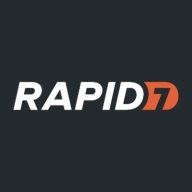

Rapid7 InsightIDR and SentinelOne Singularity Identity compete in cybersecurity. Rapid7 excels in pricing and customer satisfaction, while SentinelOne's features justify a higher cost.
Features: Rapid7 InsightIDR provides robust security analytics, incident detection, and seamless tool integration. It simplifies complex data management with easy-to-interpret insights. SentinelOne Singularity Identity offers advanced AI-driven threat detection, identity protection, and proactive management, emphasizing autonomous operations. Rapid7 focuses on real-time insights, whereas SentinelOne prioritizes AI-driven prevention.
Room for Improvement: Rapid7 could enhance its AI capabilities and expand identity protection features. SentinelOne might focus on simplifying its deployment process and improving integration with third-party apps. Both could benefit from reducing false positives in threat detection.
Ease of Deployment and Customer Service: Rapid7 InsightIDR offers streamlined deployment and effective customer support, integrating smoothly with existing infrastructure. SentinelOne, while requiring a more involved setup due to its AI capabilities, provides robust support to aid the process, focusing on customization and detailed configuration.
Pricing and ROI: Rapid7 InsightIDR is known for its cost-effectiveness and quick ROI, appealing to budget-optimized businesses. SentinelOne Singularity Identity, though more expensive initially, promises substantial ROI with its autonomous operations and robust threat prevention.


Parsing hundreds of trivial alerts. Managing a mountain of data. Manually forwarding info from your endpoints. Forget that. InsightIDR instantly arms you with the insight you need to make better decisions across the incident detection and response lifecycle, faster.
Singularity Identity, a component of the Singularity platform, provides threat detection & response (ITDR) capabilities to defend Active Directory and domain-joined endpoints in real-time from adversaries aiming to gain persistent, elevated privilege and move covertly. Singularity Identity provides actionable, high-fidelity insight as attacks emerge from managed and unmanaged devices. It detects identity misuse and reconnaissance activity happening within endpoint processes targeting critical domain servers, service accounts, local credentials, local data, network data, and cloud data. On-agent cloaking and deception techniques slow the adversary down while providing situational awareness and halting adversarial attempts at lateral movement. Singularity Identity helps you detect and respond to identity-based attacks, providing early warning while misdirecting them away from production assets.
Singularity Identity’s primary use case is to protect credential data and disrupt identity-based attacks. The most valuable function of Singularity Identity is its ability to misdirect attackers by providing deceptive data to identity-based recon attacks. Additionally, it can hide and deny access to locally stored credentials or identity data on Active Directory domain controllers.
Singularity Identity also provides rapid detection and respond to identity attacks, capturing attack activity and feeding it directly to the Singularity platform’s Security DataLake for enterprise-wide analysis and response.
By implementing Singularity Identity, organizations benefit from enhanced security, reduced credential-related risks, and improved user productivity. It detects and responds to identity-based attacks, ensuring only authorized individuals can access critical identity data. With its cloaking capabilities to hide identity stored locally on endpoints or in the identity infrastructure and it’s ability to provide decoy results to identity-based attacks, organizations can effectively secure their sensitive or privileged identities, resulting in improved overall identity security.
We monitor all Threat Deception Platforms reviews to prevent fraudulent reviews and keep review quality high. We do not post reviews by company employees or direct competitors. We validate each review for authenticity via cross-reference with LinkedIn, and personal follow-up with the reviewer when necessary.